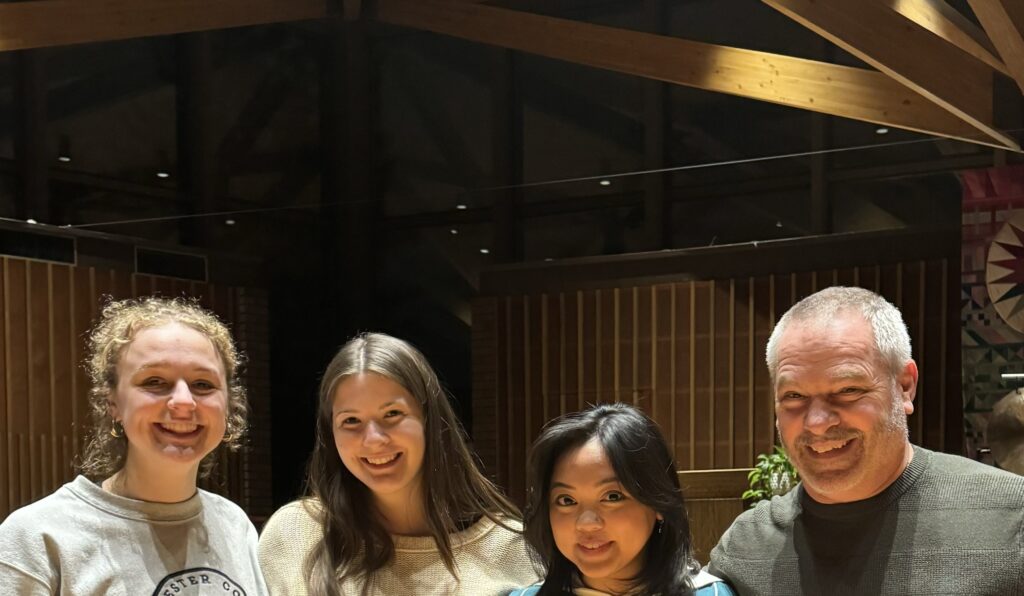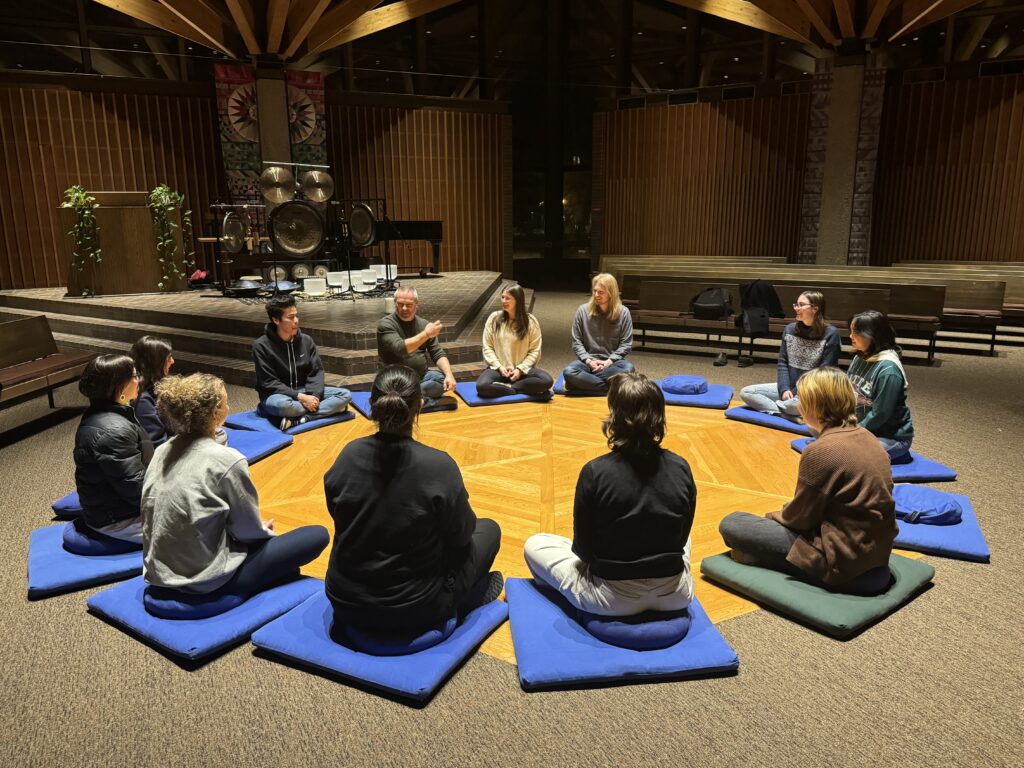Ron Barrett’s Anthropology of Death and Dying course extends beyond his Macalester College classroom. As a former hospice nurse, Ron has helped patients and families through the dying process, and he wants his students to be exposed to hospice care. Three students in his class are fulfilling their hospice volunteering requirement with Our Lady of Peace. Vyen Hayag is a patient companion and Laura Sullivan serves meals to patients in our hospice residence, and Paige Tomer is a patient companion in our hospice in the community program.
Some of Ron’s students have been exposed to death and dying, and some to caregiving, but many have not. “We do a screening process through our hospice partners to make sure the students are ready,” Ron says. Everyone is a little bit nervous to start with, but they’re willing to do it with encouragement from Ron and the Our Lady of Peace (OLP) staff. “At first, it was challenging because I needed to navigate a new atmosphere that I hadn’t been exposed to,” Vyen says honestly. “But the nurses and the sisters answer my questions, so I’ve become more comfortable.”
Paige was also a bit apprehensive at first. “Communicating with my patient, who is somewhat nonverbal, made it challenging to establish a connection,” she says. “I now feel connected and look forward to seeing her every week. I learned that being present is the biggest factor. Even if we can’t have full conversations, we can both appreciate being in each other’s company.”
As a mealtime volunteer, Laura delivers meals to residents, and makes sure they have fresh water. She knows the importance of understanding that each resident has unique diet restrictions depending on what their body can tolerate as they reach the end of their life. The kitchen staff prepares meals based on the patient’s unique needs, and Laura makes sure the patient is served the correct meal. She also responds to food-related requests from families and is happy to help in the kitchen. She agrees with Vyen. “It was challenging at first, but I’ve grown more comfortable because I have more experience, and the staff has helped me adjust to my role.”
Ron’s once a week, 3-hour class is a combination of “book learning,” mindfulness, and meditation. He says the 3rd hour is a process session that includes mindful meditation. This hour is critical because students share their hospice experiences. “After a few weeks, the magic starts to happen, and the book and experiential learning begin to merge.”
It’s clear the book work continues to fuel the experiences of these young volunteers. Here’s what Vyen says about the class, “We’re examining the dying process in every way possible; how it has been perceived throughout history, how human beings come to terms with their own deaths, and the differing cultural attitudes towards human mortality and how it shapes social practices.”
Paige says she has a better understanding of how cultural beliefs and societal norms shape perceptions and practices surrounding death. “It’s helped me approach my interactions with patients more sensitively,” she says. “And the literature and class discussions have allowed me to feel more comfortable thinking about death, while understanding some of the complex emotions that can exist surrounding the death of oneself or a loved one.”
In his years teaching at Macalester, Ron has round that most students are strongly motivated to help save the world. “They always want to fix things. This experience is different. “It’s about people present with people, holding a patient’s hand, talking and listening, even if they’re non-responsive. Patients enjoy young people and finding out what they’re doing.”
Over the years, Ron has seen many great outcomes from the relationships students have with hospice patients. “One patient was an artist who incorporated found objects into his work, so his student volunteer went dumpster diving with him. Another student wanted to learn how to knit, so the patient taught her. Life-long learning can also include end of life.”
It’s clear the OLP student volunteers are also being impacted by their hands-on hospice experience. “I’m broadening my understanding of the hospice field and the people it serves,” Laura says. “I’ve learned a lot about how people may look during the dying process and am better at recognizing the breadth of conditions a person may face while in hospice care.” Paige adds, I hope that I can provide comfort and some joy to my patient, along with respite for the nurses/family members in the facility. And Vyen sums it up this way, “I’ve only lived one life and am eager to listen to how others have experienced their lives and what they make of it.”
Our Lady of Peace is grateful for our student volunteers and their professors, who brought them to our door. Thank you, Ron, Vyen, Paige, and Laura. We’re happy you came, and we wish you all the best in your bright futures!
Read the featured article in the Star Tribune

